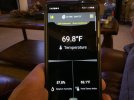Lefty G-gear
Well-Known Member
Sierra Infinity Software has me plug in known humidity when shooting loads, not making them.Anyone test the effects of humidity changes in the reloading room while doing load development? Just watched a video on YouTube about how high and low humidity levels effect loaM
Amazon product ASIN B00M5FDXYI
Last edited:

